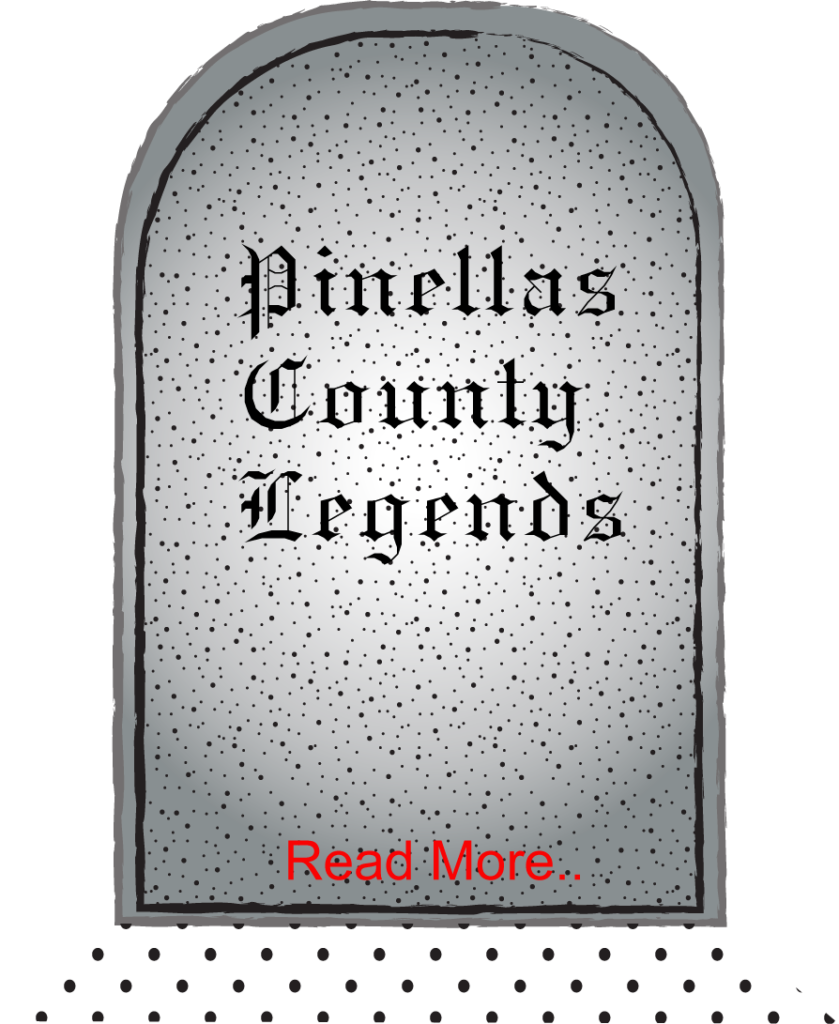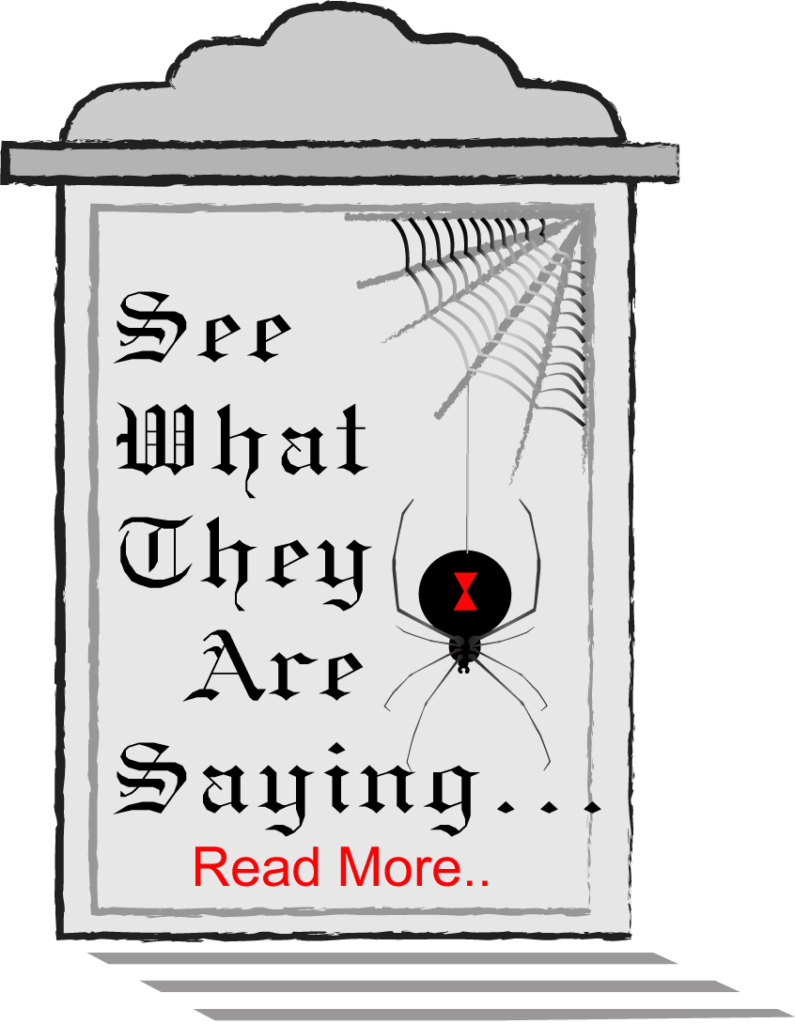
Did You Hear the One About… ?
St. Pete’s ghostbuster takes on a new challenge: urban legends.
BY ALEX PICKETT
Published 10.18.06, Creative Loafing (www.tampa.creativeloafing.com)
Alex Pickett
TOOLS OF THE TRADE: Brandy Stark, shown here with some of her ghostbusting equipment, is expanding her research to urban legends.Last month, I heard my first St. Pete urban legend.
“There’s something about this place,” a local musician said to me cryptically. “You know, I heard St. Pete was once an Indian burial ground.”
I didn’t think much of the comment until I heard it again from ghost hunter Brandy Stark.
“I’ve always found it fairly interesting that the original sidewalks and streets were supposed to be made of those burial mounds,” she says, describing a macabre mixture of bones, shells and water allegedly used to make concrete for St. Pete’s first walkways.
Though there’s no evidence that any such material ever did get mixed up with St. Pete asphalt, Brandy Stark is willing to find out. She’s branching out from ghostbusting to urban legend investigations.
Even with the popularity of TV shows like MythBusters and websites like Snopes.com, urban legends don’t seem to be disappearing; in fact, with the Internet, these stories are gaining a whole new life of their own.
“There’s this idea that superstition and folklore have died down,” says Stark, an instructor in World Religions and Humanities at St. Petersburg College and co-founder of the local spirit-chasing group S.P.I.R.I.T.S. “It hasn’t died, it’s only transformed, and it’s transformed into these urban legends.”
Stark, with the help of her team of paranormal investigators, plans to research and scrutinize local urban legends — not necessarily to debunk them but to discover their origins. If her previous research is any indication, she will have a plethora to choose from.
Urban legends, by their definition, are local stories presented as fact that always seem to be witnessed by “a friend of a friend.” In almost all cases, they contain local, easily identifiable landmarks to amp up the believability quotient. For St. Petersburg, that often means the Gulf and the Sunshine Skyway Bridge.
Stories of vanishing fishermen run from Ft. De Soto Park to Clearwater Beach, usually following the plot of the “Grey Man” legend, which originated in the Carolinas. As the story goes, the Grey Man, who was an avid fisher before he died, comes back from the dead to warn the living of approaching hurricanes. Fort De Soto has its own variation of the story: the “Flirting Fisherman,” an old-timer who whispers teasing comments in the ears of women anglers and then vanishes when they turn around.
Likewise, the Sunshine Skyway Bridge has lent itself to numerous legends, like the vanishing blonde hitchhiker. In this tale, which began to spread in the 1950s after the bridge’s first suicide, a pretty young hitchhiker is picked up on the Skyway by a driver but vanishes before she’s dropped off.
“The vanishing hitchhiker story is as old as time itself,” Stark explains. “Even in the 1800s, there’s a story about a vanishing hitchhiker in a buggy and carriage.”
Following the bridge collapse in 1980, Stark says she started hearing the hitchhiker story again, but with a twist.
“Apparently, they got some really good hair dye in the afterworld because she’s now a brunette,” she quips. “She’s described wearing a T-shirt and jeans and does much the same thing.”
The bridge’s collapse and the Greyhound Bus that careened off the side fueled rumors of a curse.
“According to the legend, every part that was taken from the old bus either exploded or the bus would start having other problems,” Stark says.
Not all the bridge’s urban legends are tragic, though. UFO conspiracy theorists maintain its spires are antennae.
“Aliens are supposed to use those antennae to basically boost their signal to call home,” Stark says, trying not to laugh. “I find that greatly ironic because whenever I’m on the Sunshine Skyway my cell phone dies.”
And why are aliens visiting Tampa Bay? To collect hammerhead sharks and horseshoe crabs to cure a galactic disease, of course!
Stark says local characters can also fuel urban legends, like the woman who used to be seen years ago waiting at a downtown St. Pete street corner every day. A friend of Stark’s told her the story.
“This woman’s fiancé was called off to World War II and left via train,” says Stark, recalling the details. “He always told her he would be back and would meet her at the train station when his duty was over. Unfortunately he got killed in the war.”
According to Stark’s friend, the woman went crazy.
“So every day people would see her walking down to the corner where she was supposed to meet her fiancé. Even though the train station was gone and everything else was gone, for hours she would wait for her fiancé. When he didn’t come, she would turn around and go home. The next day, she would do the same exact thing.”
Stark says many of the urban legends she heard growing up in the area are actually local variations of stories that have circulated the country for decades (and even made it into a teen slasher movie): the kidnapper who stalks the University Mall bathroom for sex slaves; the rapist who hides under a woman’s car in a local parking garage waiting to slash her Achilles tendon; the elderly woman from Tampa who puts her poodle in the microwave to dry it; and the conservative St. Pete woman who has a rare one-night stand and wakes up to find a black rose and a message written in lipstick on the mirror: “Welcome to the world of AIDS.”
“I remember hearing that in high school,” Stark says. “Basically it’s a personification of the fear of AIDS. A lot of times these stories actually have moral tales to them.”
The most recent, she says, is the one advising drivers not to flash their headlights at any oncoming cars with their lights off. The driver, the legend warns, might be part of a gang initiation; if you flash, he’ll chase and shoot you. (Police agencies across the country disproved the story.)
Starting this month, Stark will begin her investigations into some of the more prominent urban legends in the county. Through interviews, polls and newspaper research, she hopes to discover the grains of truth present in most stories. In some instances, she might plan experiments, such as those on the MythBusters TV show.
Even if Stark demystifies these legends, she says there will always be new lore to replace them.
“With the continued mass e-mails and the rise of urban-legend-busting sites, people will become wiser to them,” she predicts. Once the old stories are debunked, “I think we’ll get a whole new crop of them.”
Will urban legends survive the information age? Stark says yes.
“I think it’s an intrinsic part of human nature,” she says. “I don’t think we’ll ever be rid of them. I mean, we have to have something to talk about, right?”



